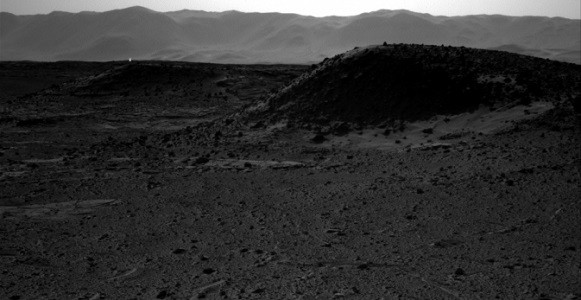
NASA's Curiosity rover has captured an image on the surface of Mars 2 April and 3 April that appeared like a beam of light, which according to the experts, might be due to cosmic rays hitting the camera's detector or the sunlight shining off on a rock.
However, the strange light raised questions about an alien residing on Mars or an Unidentified Flying Object (UFO). The images were captured just when the rover reached a waypoint called "Kimberley".
"In the thousands of images we've received from Curiosity, we see ones with bright spots nearly every week. These can be caused by cosmic-ray hits or sunlight glinting from rock surfaces, as the most likely explanations." Justin Maki of NASA's Jet Propulsion Laboratory, Pasadena, California, who led the team that built and operates the Navigation Camera, said in a NASA press release.
"This is not a glare from the sun, nor is it an artifact of the photo process. Look closely at the bottom of the light. It has a very flat surface giving us 100% [indication] it is from the surface," Scott Waring, editor of the website UFO Sightings Daily, said.
The bright lights appear in images taken from right-eye camera of the stereo Navcam, but was not spotted in images taken within one second by the left-eye camera.
"Normally we can quickly identify the likely source of a bright spot in an image based on whether or not it occurs in both images of a stereo pair. In this case, it's not as straightforward because of a blocked view from the second camera on the first day." Maki added.
On both the Kimberley and the slope of Mount Sharp inside Gale Crater, scientists intend to use Curiosity's science instruments to study more about the environmental changes and habitable past conditions.
The Jet Propulsion Laboratory of NASA is a division of Caltech in Pasadena and operates the Mars Science Laboratory Project for NASA's Science Mission Directorate, Washington.
Photo Credit: NASA
(Edited by Vanilla Sharma)















